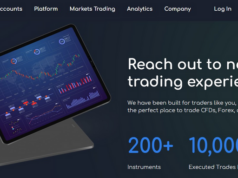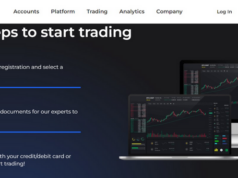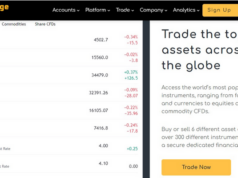In the dynamic world of oil trading, understanding and managing market sentiment, which is crucial for investors, is essential. The emotions of fear and greed play significant roles in shaping the behavior of market participants and influencing oil prices. This article delves into the intricate relationship between fear, greed, and investor psychology, highlighting the role of market sentiment in oil trading. In this setting, the oilprofit.app, an oil trading platform, provides a distinctive viewpoint on managing the market’s complexity.
The Impact of Fear on Oil Trading
Fear and Price Volatility
Fear can be a powerful force in the oil market, driving price volatility and creating opportunities for astute investors. When fear grips the market, uncertainty prevails, leading to heightened price fluctuations. Economic, geopolitical, and environmental factors can trigger fear among investors, causing them to react impulsively and make irrational decisions.
Flight to Safety
During times of fear, investors often seek refuge in safe-haven assets, such as gold or bonds, diverting their attention and capital away from oil. This flight to safety can result in a temporary decrease in oil demand and subsequently affect prices. Understanding these behavioral patterns is crucial for traders, as they can capitalize on market downturns caused by fear-driven sell-offs.
Fear as an Indicator
Fear can also act as a leading indicator of potential market shifts. Monitoring sentiment indicators, such as the Fear and Greed Index, can provide valuable insights into the overall market sentiment and help traders anticipate future price movements. By gauging the fear levels, investors can position themselves strategically to take advantage of opportunities or mitigate risks.
The Role of Greed in Oil Trading
Greed and Speculation
Greed is another powerful emotion that drives investor behavior in the oil market. The desire for profit can lead to speculative activities, where traders take on higher risks in pursuit of higher returns. This speculative behavior can contribute to market inefficiencies and increase price volatility, as traders may deviate from fundamental supply and demand factors.
Market Bubbles
Greed-driven speculation can sometimes create market bubbles in the oil industry. When investors excessively bid up prices based on optimistic expectations, a bubble forms. This bubble eventually bursts when reality sets in, resulting in significant price corrections. Recognizing and avoiding these bubbles is crucial for investors to protect their investments and maximize returns.
The Fear-Greed Cycle
Fear and greed often create a cyclical pattern in oil trading. Fear-driven market downturns can trigger a sense of opportunity and greed among savvy investors, leading to buying opportunities and subsequent price recoveries. Conversely, excessive greed can give rise to fear when market expectations fail to materialize, leading to panic selling and downward price spirals.
Managing Investor Psychology in Oil Trading
Emotional Discipline
Managing investor psychology is key to successful oil trading. Emotional discipline involves controlling fear and greed, making rational decisions based on thorough analysis rather than succumbing to emotional biases. By understanding one’s own emotions and implementing risk management strategies, traders can navigate volatile markets with more confidence and reduce the impact of sentiment-driven price swings.
Data-Driven Analysis
Data-driven analysis is crucial for mitigating the influence of emotions on trading decisions. By utilizing advanced analytics, traders can identify patterns and trends in oil market data, enabling them to make informed judgments based on objective information rather than succumbing to fear or greed. This approach helps remove subjective biases and promotes more consistent and profitable trading strategies.
Market Sentiment Indicators
Keeping a close eye on market sentiment indicators can provide valuable insights into the prevailing mood of oil traders. Alongside the Fear and Greed Index, sentiment indicators such as the Commitment of Traders (COT) report, put-call ratio, and news sentiment analysis can help traders gauge market sentiment and adjust their strategies accordingly. Combining these indicators with fundamental and technical analysis enhances decision-making capabilities and improves trading outcomes.
Conclusion
In the world of oil trading, understanding and managing market sentiment are essential for achieving success. Fear and greed, the twin emotions that drive investor psychology, play significant roles in shaping oil prices and influencing trading decisions. By recognizing the impact of fear and greed, traders can navigate market volatility more effectively and capitalize on opportunities presented by sentiment-driven price movements. Emotional discipline, data-driven analysis, and the use of market sentiment indicators are valuable tools in managing investor psychology and achieving long-term profitability in oil trading.















